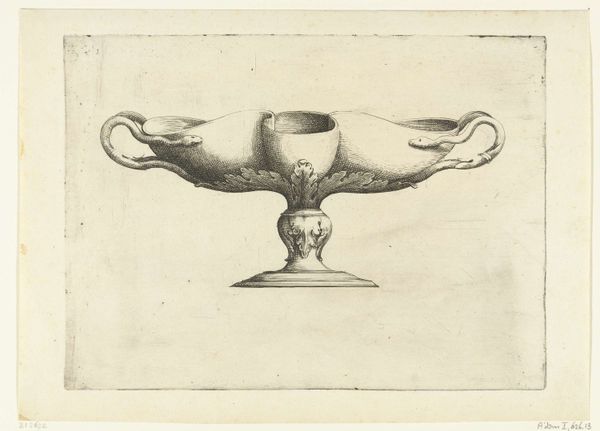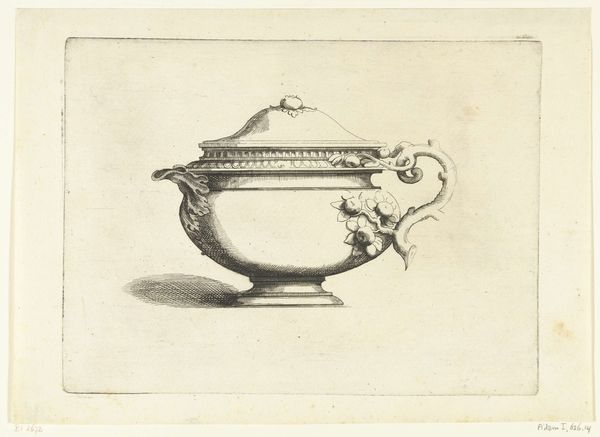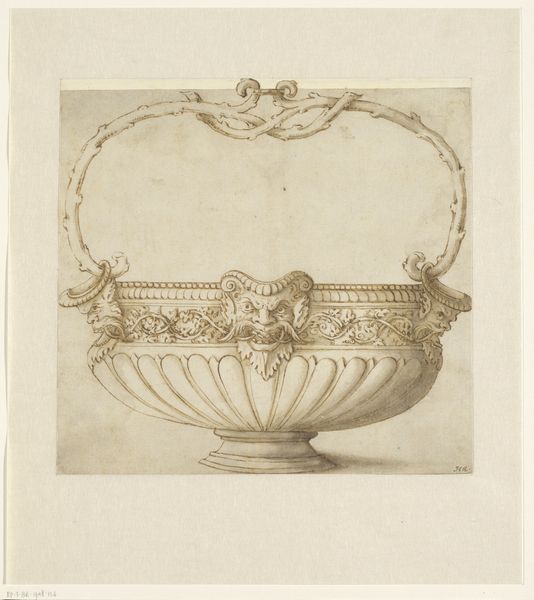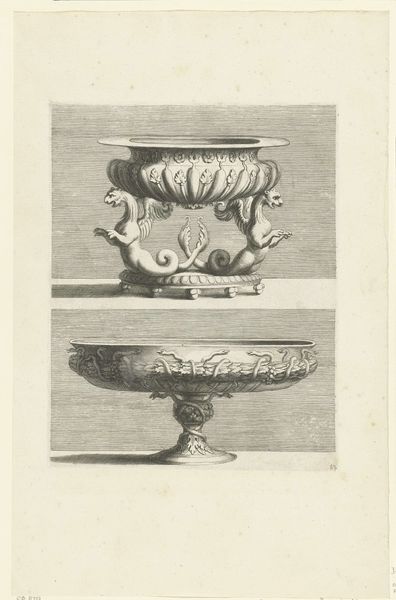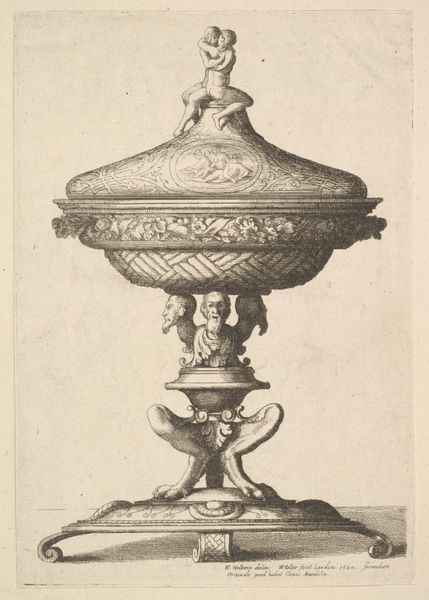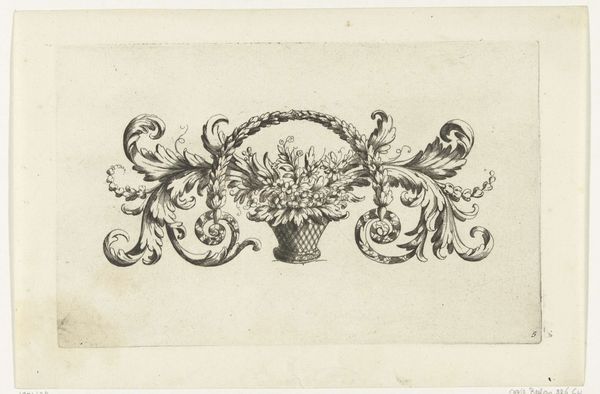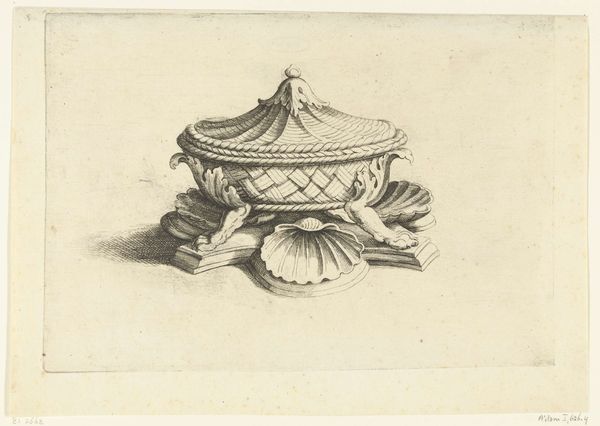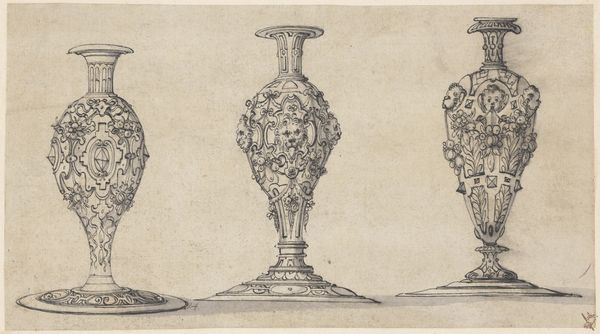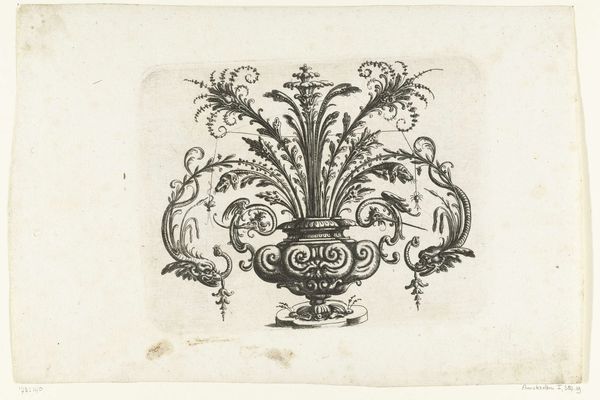
print, intaglio, engraving
#
baroque
# print
#
intaglio
#
engraving
Dimensions: height 161 mm, width 219 mm
Copyright: Rijks Museum: Open Domain
Hendrik van der Borcht the Second made this print of a bowl decorated with a mascaron sometime in the 17th century. At the time, the Dutch Republic was a world leader in trade and this bowl speaks to the values of its wealthy merchant class. The bowl itself is ornate, with fluted sides, a leafy base, and a grotesque face, or mascaron, near the top. These elements are drawn from classical art and architecture. The classical style was popular in the Netherlands at this time, as it lent an air of sophistication and refinement to Dutch culture. The bowl is also a symbol of wealth and status. Only the wealthiest families could afford such a luxurious object. Prints like this were often collected in albums called 'Kunstboeken', which functioned as a sort of proto-museum. They reveal the networks through which images and ideas circulated at the time. To better understand this artwork, it is helpful to consult inventories, letters, and other documents from the period. These sources can provide valuable insights into the social and cultural context in which the artwork was created.
Comments
No comments
Be the first to comment and join the conversation on the ultimate creative platform.
